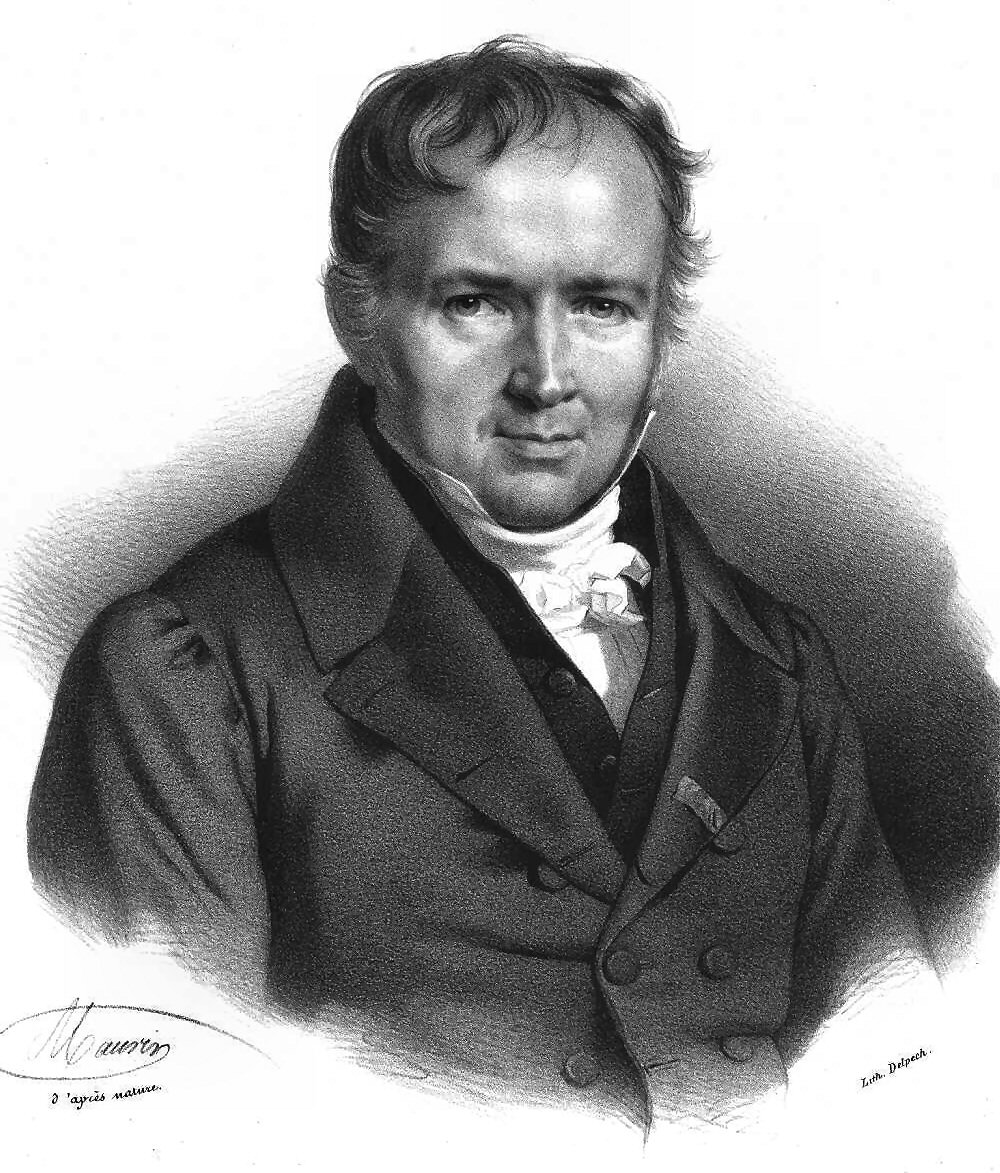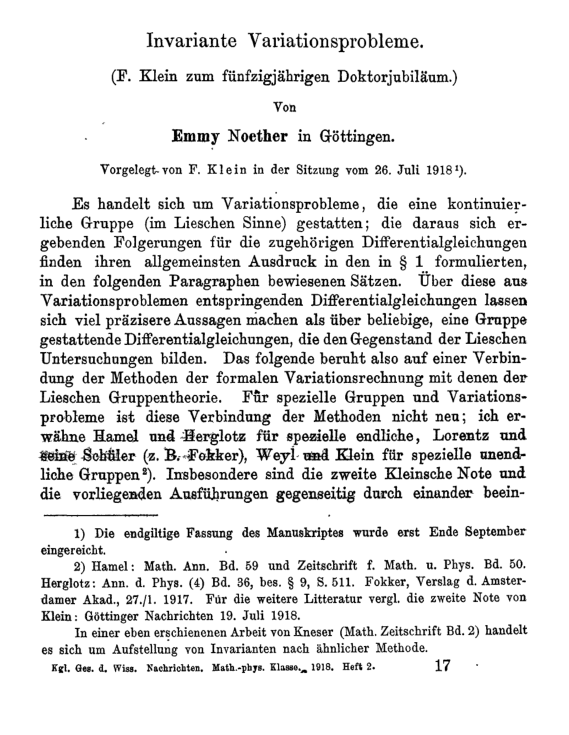|
Conserved Quantity
In mathematics, a conserved quantity of a dynamical system is a function of the dependent variables, the value of which remains constant along each trajectory of the system. Not all systems have conserved quantities, and conserved quantities are not unique, since one can always produce another such quantity by applying a suitable function, such as adding a constant, to a conserved quantity. Since many laws of physics express some kind of conservation, conserved quantities commonly exist in mathematical models of physical systems. For example, any classical mechanics model will have mechanical energy as a conserved quantity as long as the forces involved are conservative. Differential equations For a first order system of differential equations :\frac = \mathbf f(\mathbf r, t) where bold indicates vector quantities, a scalar-valued function ''H''(r) is a conserved quantity of the system if, for all time and initial conditions in some specific domain, :\frac = 0 Note that by ... [...More Info...] [...Related Items...] OR: [Wikipedia] [Google] [Baidu] |
Dynamical System
In mathematics, a dynamical system is a system in which a Function (mathematics), function describes the time dependence of a Point (geometry), point in an ambient space. Examples include the mathematical models that describe the swinging of a clock pendulum, fluid dynamics, the flow of water in a pipe, the Brownian motion, random motion of particles in the air, and population dynamics, the number of fish each springtime in a lake. The most general definition unifies several concepts in mathematics such as ordinary differential equations and ergodic theory by allowing different choices of the space and how time is measured. Time can be measured by integers, by real number, real or complex numbers or can be a more general algebraic object, losing the memory of its physical origin, and the space may be a manifold or simply a Set (mathematics), set, without the need of a Differentiability, smooth space-time structure defined on it. At any given time, a dynamical system has a State ... [...More Info...] [...Related Items...] OR: [Wikipedia] [Google] [Baidu] |
Poisson Bracket
In mathematics and classical mechanics, the Poisson bracket is an important binary operation in Hamiltonian mechanics, playing a central role in Hamilton's equations of motion, which govern the time evolution of a Hamiltonian dynamical system. The Poisson bracket also distinguishes a certain class of coordinate transformations, called ''canonical transformations'', which map canonical coordinate systems into canonical coordinate systems. A "canonical coordinate system" consists of canonical position and momentum variables (below symbolized by q_i and p_i, respectively) that satisfy canonical Poisson bracket relations. The set of possible canonical transformations is always very rich. For instance, it is often possible to choose the Hamiltonian itself H =H(q, p, t) as one of the new canonical momentum coordinates. In a more general sense, the Poisson bracket is used to define a Poisson algebra, of which the algebra of functions on a Poisson manifold is a special case. There are ot ... [...More Info...] [...Related Items...] OR: [Wikipedia] [Google] [Baidu] |
Invariant (physics)
In theoretical physics, an invariant is an observable of a physical system which remains unchanged under some transformation. Invariance, as a broader term, also applies to the no change of form of physical laws under a transformation, and is closer in scope to the mathematical definition. Invariants of a system are deeply tied to the symmetries imposed by its environment. Invariance is an important concept in modern theoretical physics, and many theories are expressed in terms of their symmetries and invariants. Examples In classical and quantum mechanics, invariance of space under translation results in momentum being an invariant and the conservation of momentum, whereas invariance of the origin of time, i.e. translation in time, results in energy being an invariant and the conservation of energy. In general, by Noether's theorem, any invariance of a physical system under a continuous symmetry leads to a fundamental conservation law. In crystals, the electron density is peri ... [...More Info...] [...Related Items...] OR: [Wikipedia] [Google] [Baidu] |
Charge (physics)
In physics, a charge is any of many different quantities, such as the electric charge in electromagnetism or the color charge in quantum chromodynamics. Charges correspond to the time-invariant generators of a symmetry group, and specifically, to the generators that commute with the Hamiltonian. Charges are often denoted by the letter ''Q'', and so the invariance of the charge corresponds to the vanishing commutator ,H0, where H is the Hamiltonian. Thus, charges are associated with conserved quantum numbers; these are the eigenvalues ''q'' of the generator ''Q''. Abstract definition Abstractly, a charge is any generator of a continuous symmetry of the physical system under study. When a physical system has a symmetry of some sort, Noether's theorem implies the existence of a conserved current. The thing that "flows" in the current is the "charge", the charge is the generator of the (local) symmetry group. This charge is sometimes called the Noether charge. Thus, for exampl ... [...More Info...] [...Related Items...] OR: [Wikipedia] [Google] [Baidu] |
Noether's Theorem
Noether's theorem or Noether's first theorem states that every differentiable symmetry of the action of a physical system with conservative forces has a corresponding conservation law. The theorem was proven by mathematician Emmy Noether in 1915 and published in 1918. The action of a physical system is the integral over time of a Lagrangian function, from which the system's behavior can be determined by the principle of least action. This theorem only applies to continuous and smooth symmetries over physical space. Noether's theorem is used in theoretical physics and the calculus of variations. It reveals the fundamental relation between the symmetries of a physical system and the conservation laws. It also made modern theoretical physicists much more focused on symmetries of physical systems. A generalization of the formulations on constants of motion in Lagrangian and Hamiltonian mechanics (developed in 1788 and 1833, respectively), it does not apply to systems that cann ... [...More Info...] [...Related Items...] OR: [Wikipedia] [Google] [Baidu] |
Conservation Law (physics)
In physics, a conservation law states that a particular measurable property of an isolated physical system does not change as the system evolves over time. Exact conservation laws include conservation of energy, conservation of linear momentum, conservation of angular momentum, and conservation of electric charge. There are also many approximate conservation laws, which apply to such quantities as mass, parity, lepton number, baryon number, strangeness, hypercharge, etc. These quantities are conserved in certain classes of physics processes, but not in all. A local conservation law is usually expressed mathematically as a continuity equation, a partial differential equation which gives a relation between the amount of the quantity and the "transport" of that quantity. It states that the amount of the conserved quantity at a point or within a volume can only change by the amount of the quantity which flows in or out of the volume. From Noether's theorem, each conservation law is ... [...More Info...] [...Related Items...] OR: [Wikipedia] [Google] [Baidu] |
Hamiltonian System
A Hamiltonian system is a dynamical system governed by Hamilton's equations. In physics, this dynamical system describes the evolution of a physical system such as a planetary system or an electron in an electromagnetic field. These systems can be studied in both Hamiltonian mechanics and dynamical systems theory. Overview Informally, a Hamiltonian system is a mathematical formalism developed by Hamilton to describe the evolution equations of a physical system. The advantage of this description is that it gives important insights into the dynamics, even if the initial value problem cannot be solved analytically. One example is the planetary movement of three bodies: while there is no closed-form solution to the general problem, Poincaré showed for the first time that it exhibits deterministic chaos. Formally, a Hamiltonian system is a dynamical system characterised by the scalar function H(\boldsymbol,\boldsymbol,t), also known as the Hamiltonian. The state of the system, ... [...More Info...] [...Related Items...] OR: [Wikipedia] [Google] [Baidu] |
Lyapunov Function
In the theory of ordinary differential equations (ODEs), Lyapunov functions, named after Aleksandr Lyapunov, are scalar functions that may be used to prove the stability of an equilibrium of an ODE. Lyapunov functions (also called Lyapunov’s second method for stability) are important to stability theory of dynamical systems and control theory. A similar concept appears in the theory of general state space Markov chains, usually under the name Foster–Lyapunov functions. For certain classes of ODEs, the existence of Lyapunov functions is a necessary and sufficient condition for stability. Whereas there is no general technique for constructing Lyapunov functions for ODEs, in many specific cases the construction of Lyapunov functions is known. For instance, quadratic functions suffice for systems with one state; the solution of a particular linear matrix inequality provides Lyapunov functions for linear systems; and conservation laws can often be used to construct Lyapunov funct ... [...More Info...] [...Related Items...] OR: [Wikipedia] [Google] [Baidu] |
Conservative System
In mathematics, a conservative system is a dynamical system which stands in contrast to a dissipative system. Roughly speaking, such systems have no friction or other mechanism to dissipate the dynamics, and thus, their phase space does not shrink over time. Precisely speaking, they are those dynamical systems that have a null wandering set: under time evolution, no portion of the phase space ever "wanders away", never to be returned to or revisited. Alternately, conservative systems are those to which the Poincaré recurrence theorem applies. An important special case of conservative systems are the measure-preserving dynamical systems. Informal introduction Informally, dynamical systems describe the time evolution of the phase space of some mechanical system. Commonly, such evolution is given by some differential equations, or quite often in terms of discrete time steps. However, in the present case, instead of focusing on the time evolution of discrete points, one shifts atte ... [...More Info...] [...Related Items...] OR: [Wikipedia] [Google] [Baidu] |
Lagrangian Mechanics
In physics, Lagrangian mechanics is a formulation of classical mechanics founded on the stationary-action principle (also known as the principle of least action). It was introduced by the Italian-French mathematician and astronomer Joseph-Louis Lagrange in his 1788 work, '' Mécanique analytique''. Lagrangian mechanics describes a mechanical system as a pair (M,L) consisting of a configuration space M and a smooth function L within that space called a ''Lagrangian''. By convention, L = T - V, where T and V are the kinetic and potential energy of the system, respectively. The stationary action principle requires that the action functional of the system derived from L must remain at a stationary point (a maximum, minimum, or saddle) throughout the time evolution of the system. This constraint allows the calculation of the equations of motion of the system using Lagrange's equations. Introduction Suppose there exists a bead sliding around on a wire, or a swinging simple p ... [...More Info...] [...Related Items...] OR: [Wikipedia] [Google] [Baidu] |
Hamiltonian Mechanics
Hamiltonian mechanics emerged in 1833 as a reformulation of Lagrangian mechanics. Introduced by Sir William Rowan Hamilton, Hamiltonian mechanics replaces (generalized) velocities \dot q^i used in Lagrangian mechanics with (generalized) ''momenta''. Both theories provide interpretations of classical mechanics and describe the same physical phenomena. Hamiltonian mechanics has a close relationship with geometry (notably, symplectic geometry and Poisson structures) and serves as a link between classical and quantum mechanics. Overview Phase space coordinates (p,q) and Hamiltonian H Let (M, \mathcal L) be a mechanical system with the configuration space M and the smooth Lagrangian \mathcal L. Select a standard coordinate system (\boldsymbol,\boldsymbol) on M. The quantities \textstyle p_i(\boldsymbol,\boldsymbol,t) ~\stackrel~ / are called ''momenta''. (Also ''generalized momenta'', ''conjugate momenta'', and ''canonical momenta''). For a time instant t, the Legendre transformat ... [...More Info...] [...Related Items...] OR: [Wikipedia] [Google] [Baidu] |



